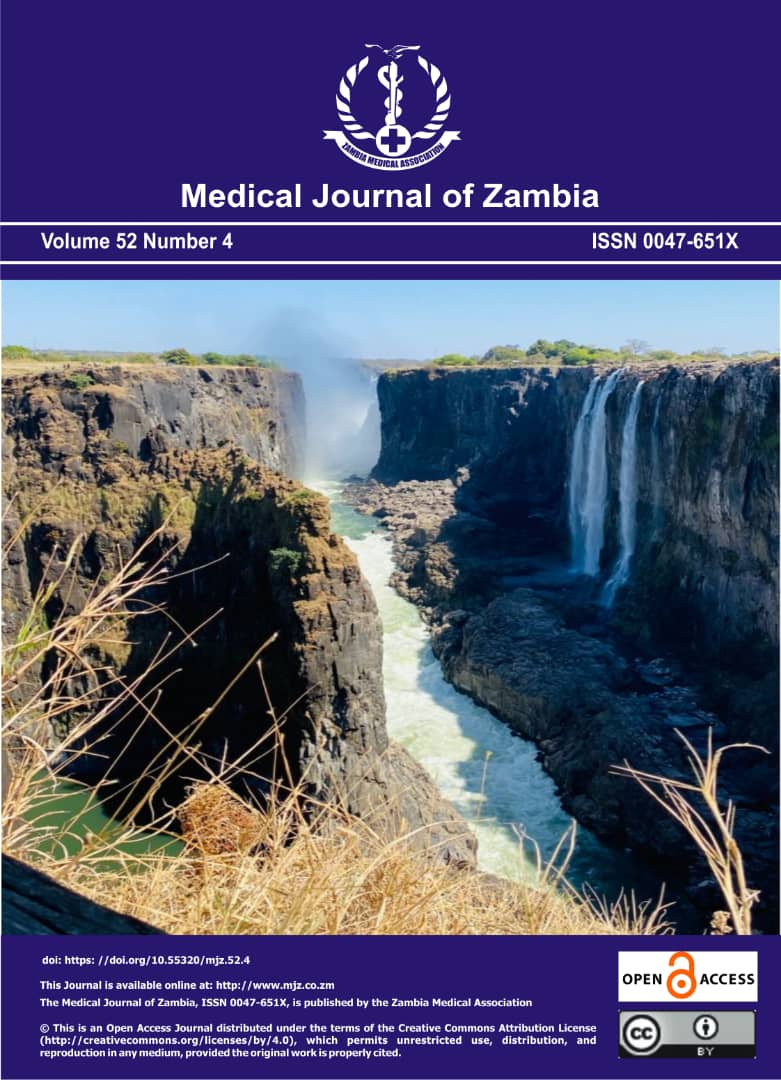Teenage Pregnancies and Cerebral Palsy Prevalence in Zambia: A Quality Improvement Study
DOI:
https://doi.org/10.55320/mjz.52.4.659Keywords:
Quality Improvement, Cerebral Palsy, Teenage pregnancy, family-centered rehabilitation, caregiversAbstract
Purpose: This quality improvement study aimed to explore how the high burden of teenage pregnancies in Zambia’s Eastern Province relates to Cerebral Palsy prevalence.
Participants and Setting: The study included care givers of children with cerebral palsy attending outpatient physiotherapy at St. Francis’ Hospital, a 490-bed facility located in Katete District, Zambia.
Methods: This retrospective study utilised facility data from January to December 2023. A total of 283 children with CP attended physiotherapy services during this period. Descriptive statistics were employed for data analysis using Microsoft Excel, with a focus on CP types and caregiver categories. The Plan-Do-Study-Act (PDSA) cycle was implemented to address key challenges identified.
Results: Caregivers ages ranged from 18 to 65 years, with the majority being teenage mothers 67%; approximately 2% were grandmothers. Most caregivers (70%) were from a rural background. Asphyxia (35.45%) and prematurity (25.45%) were the main risk factors of cerebral palsy, with spastic cerebral palsy being the most prevalent type (77.50%). A family-centered rehabilitation approach was employed. Multi-sectoral involvement was identified as critical in addressing the complications associated with teenage pregnancies.
Implications for practice: This study underlines the importance of family-centered care. Managing CP in children born to teenage mothers poses unique challenges, necessitating educational interventions targeting caregivers. Regions with high teenage pregnancy rates, such as Zambia’s Eastern Province, should expect a proportional rise in neonatal complications like CP. The equitable allocation of rehabilitation resources and a multidisciplinary approach are vital to addressing both teenage pregnancies and their associated complications.
Downloads
Downloads
Published
Issue
Section
License
Copyright (c) 2025 Medical Journal of Zambia

This work is licensed under a Creative Commons Attribution-NonCommercial 4.0 International License.









